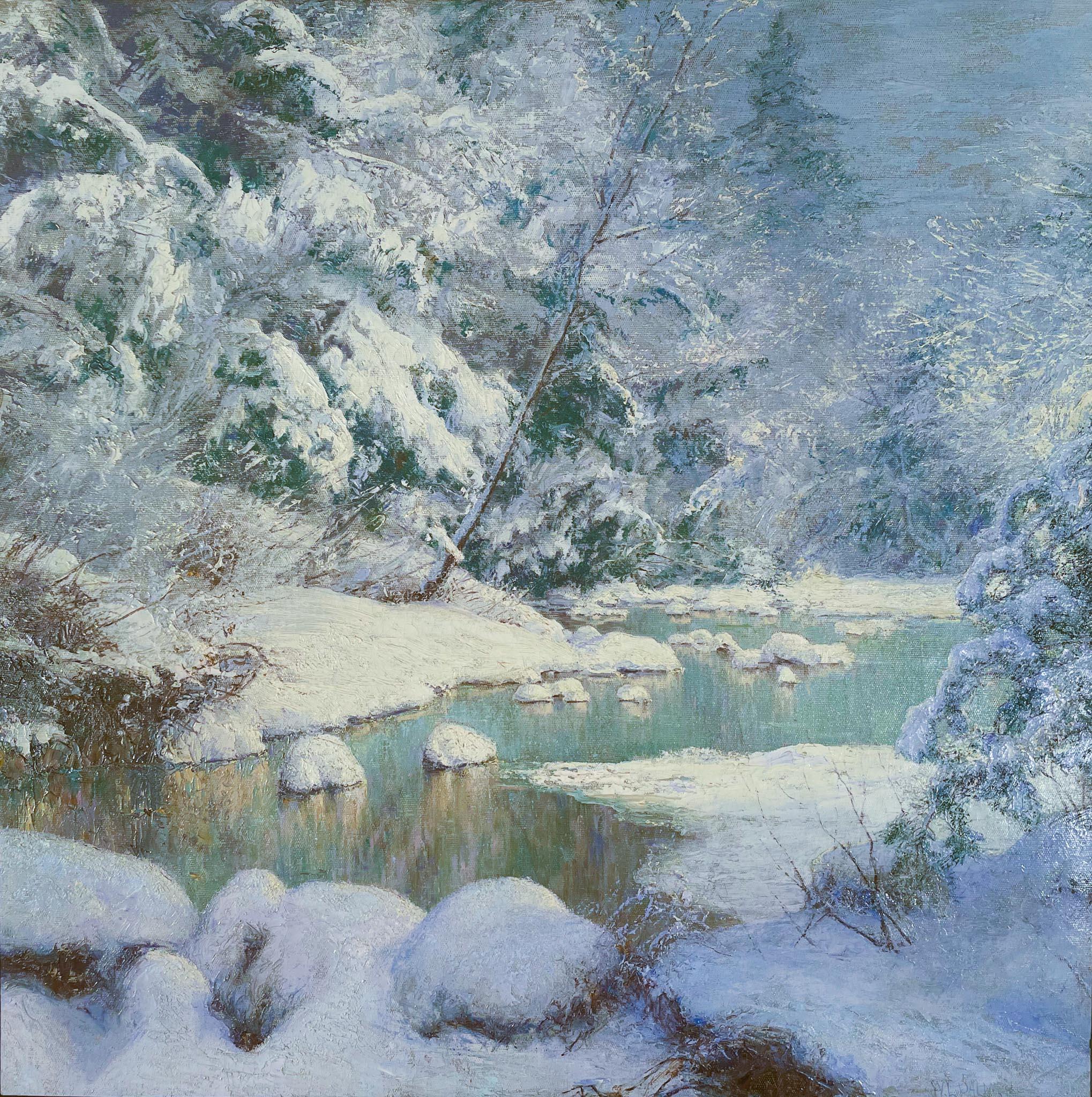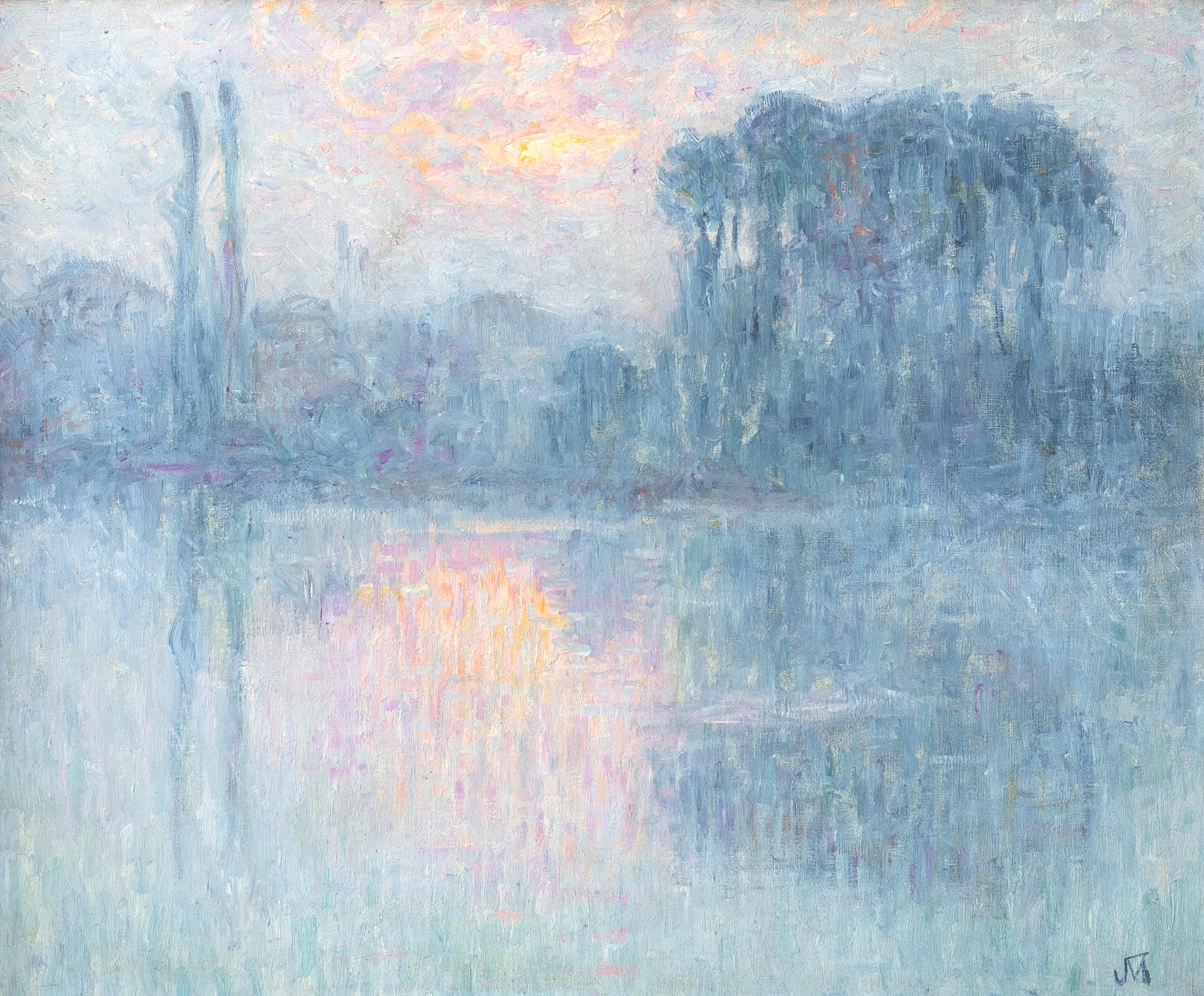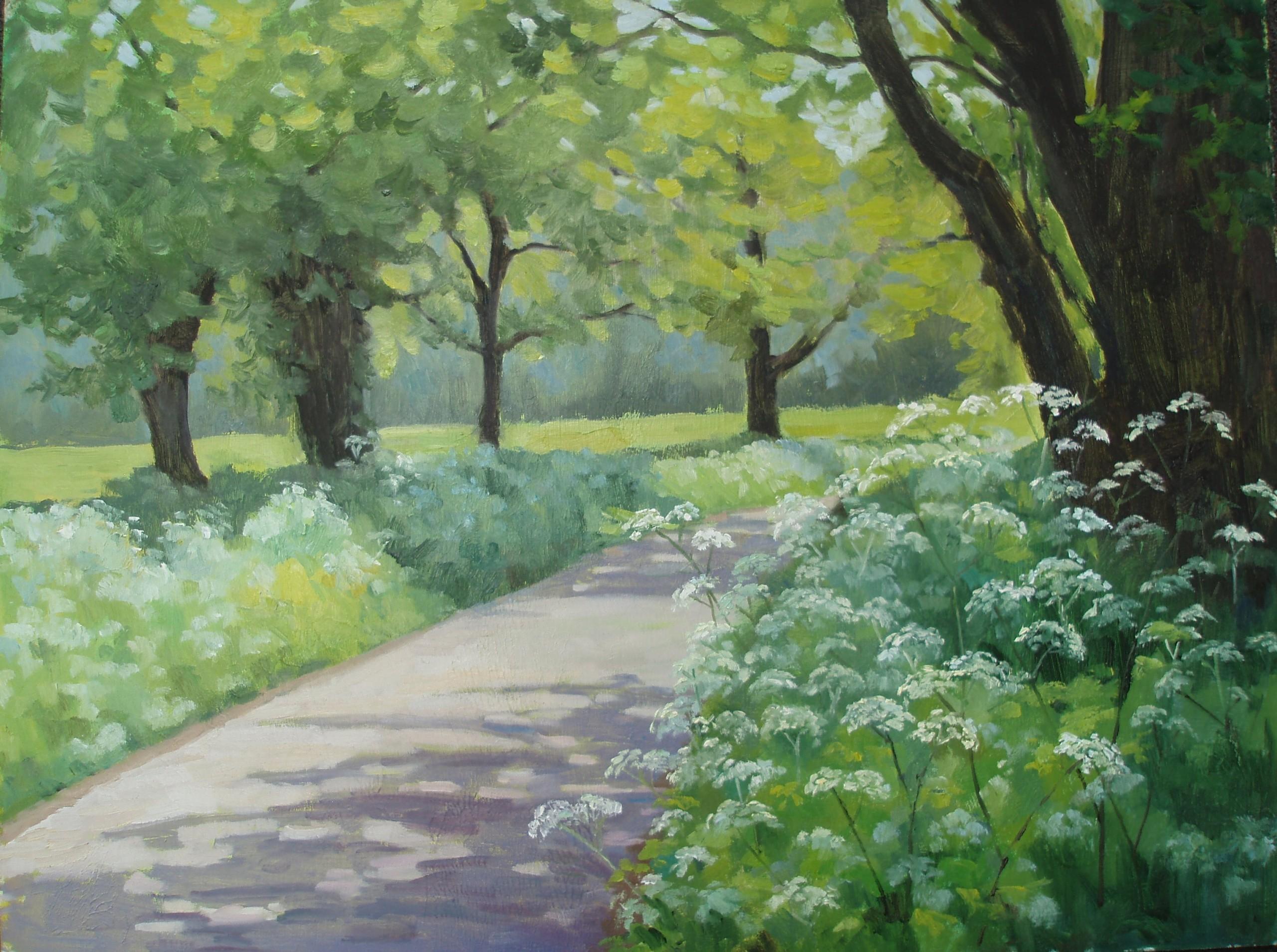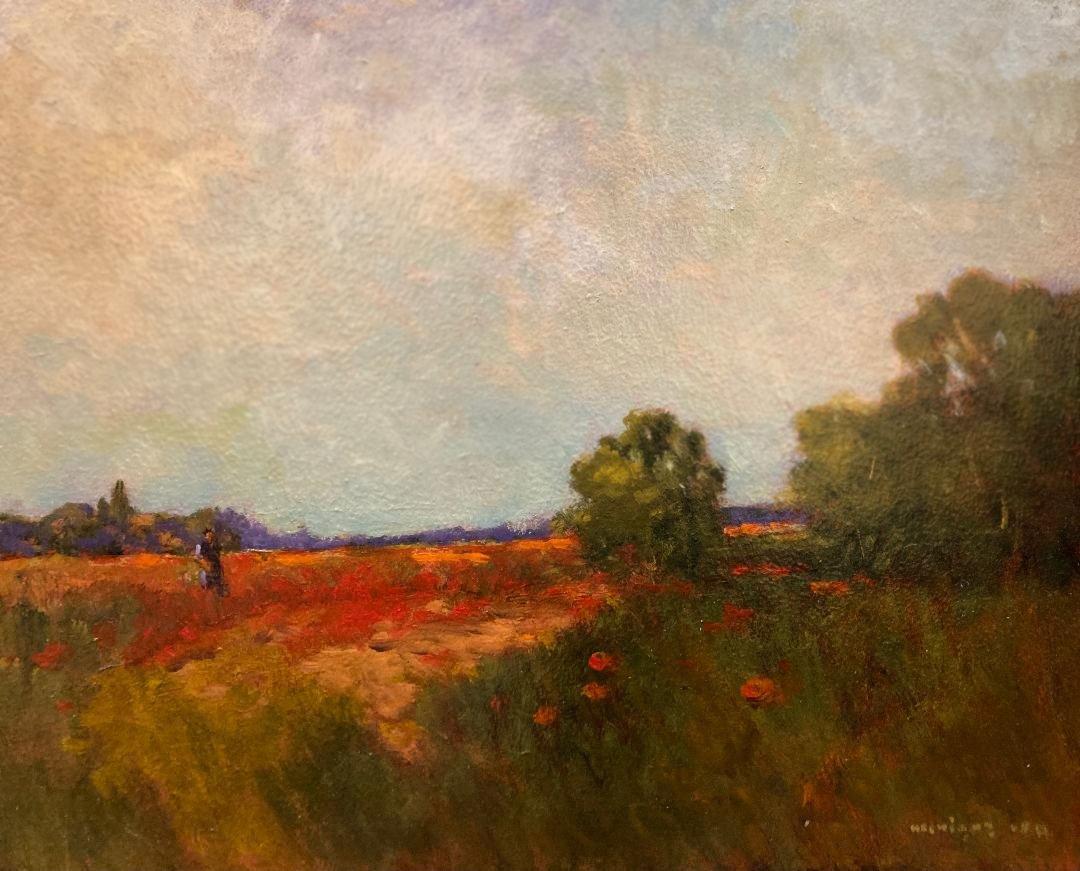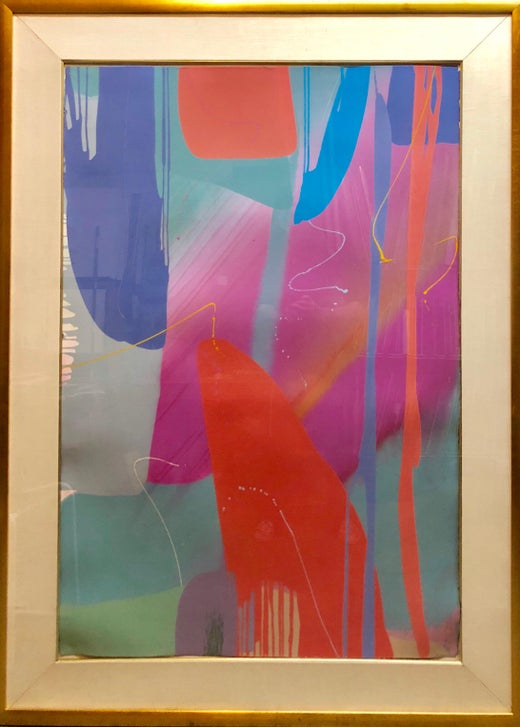Items Similar to "ABSTRACT CHURCH TOWER"
Want more images or videos?
Request additional images or videos from the seller
1 of 7
Lamar Briggs"ABSTRACT CHURCH TOWER"Mid Century Modern
Mid Century Modern
About the Item
Lamar Briggs
(1935-2015)
Houston Artist
Image Size: 14 x 11
Frame Size: 22.75 x 19.75
Medium: Oil
"Church Tower"
Lamar Briggs (1935-2015)
Following is an obituary of the artist, published in the Houston Chronicle newspaper, April 26, 2015
Lamar Briggs of Palm Beach, Florida passed away o January 4, 2015, at the age of 79 after a short illness. Born on November 13, 1935 in Lafayette, Louisiana. Lamar was drawn to visual forms from a young age. He attended the University of Southern Louisiana where he initially studied architecture before attending the University of Houston where he studied painting under Paul Maxwell, Jack Boynton, and Robert Morris before graduating from the Colorado Institute of Art. In 2005, he was inducted into the Colorado Institute of Art Hall of Fame.
In 1963, after working as a graphic designer and art director in Houston, Lamar painted his interpretation of St. Mark's Square underwater, which he saw in Life magazine. He won the Ford Foundation Purchase Award presented by Willem de Kooning in a show sponsored by the Houston Museum of Fine Arts. Lamar's first show of paintings followed in 1965 at the Meredith Long Gallery in Houston which attracted both local and national attention. By 1969, he left his position as art director.
Lamar's reputation as an abstract colorist was established in the early 1970's when he began experimenting with acrylic paints. By 1976, he was painting full-time while developing techniques for lithographs, silkscreens and monotypes.
Lamar was known for the infinite variety of shades and tints in his work and in particular the transparency of color which has a fluid and spontaneous feeling on the canvas. The collection of work by Lamar Briggs is vibrant and exciting, celebrating a joy in life and in movement that he saw in landscape, nature, light, and music – particularly jazz.
In 1971 he presented a one-man exhibition at the United States Consulate in Guadalajara, Mexico. In 1982 Lamar participated in a Group Show, the "Rutgers Archives for Printmaking Studios", at the Zummerli Art Museum in New Brunswick, New Jersey. This prestigious print show traveled for several years throughout the US.
Since 1975, Lamar Briggs has had a continuous relationship with the Moody Gallery in Houston, Texas. Betty Moody has presented his work for more than 40 years and has become a dear friend of the family.
Briggs was featured in "The Houston Century" (Top Artists of the Century) in the Houston Chronicle on December 12, 1999. From 1990 through 1994 Lamar Briggs was the Guest Artist at the Anderson Ranch Art Center in Snowmass, Colorado. Lamar's work has been shown in museums and galleries in Canada, Mexico, England, Germany, Switzerland and Hungary as well as throughout the United States. He has participated in over 140 group and one-man exhibitions in his artistic career and is known worldwide as on of the great colorists of the past century.
Lamar is survived by his devoted wife Nancy Briggs of Palm Beach, Florida.
Submitted by Stewart Peairson
Born and raised in Lafayette, the Cajun country of Louisiana, Lamar Briggs is a colorist who creates monotypes and large-scale abstract acrylic paintings. His studio is in Palm Beach, Florida.
His art education includes Independent Study, Antibes, France, 1966; Colorado Institute of Art, 1960; Art Center of Los Angeles, 1959; University of Houston, 1958; University of Southwestern Louisiana, 1953.
Early in his career, he began his signature abstract paintings that are inspired by nature, music, and a positive attitude towards life.
His approach is scholarly, and he carefully researches the symbolism in his paintings. He has sophisticated knowledge of printmaking that allows him to incorporate chine colle, collage, woodcutting and etching in his mixed media monotypes on precious papers. His goal is to achieve works that appear spontaneous and rhythmic.
Briggs has been referenced in Who's Who in American Art since 1962.
- Creator:Lamar Briggs (1935 - 2015, American)
- Creation Year:Mid Century Modern
- Dimensions:Height: 23 in (58.42 cm)Width: 20 in (50.8 cm)Depth: 2 in (5.08 cm)
- More Editions & Sizes:Image Size: 14 x 11Price: $2,000
- Medium:
- Movement & Style:
- Period:
- Framing:Frame IncludedFraming Options Available
- Condition:Please check my 1stdibs storefront to see other Vintage, Mid Century & Contemporary Texas & American art and Pottery.
- Gallery Location:San Antonio, TX
- Reference Number:1stDibs: LU769314019692
Lamar Briggs
Lamar Briggs was born in Lafayette, Louisiana. He attended University of Southern Louisiana, University of Houston and graduated from Colorado Institute of Art. Lamar’s work is internationally acclaimed, and he is known worldwide as a colorist inspired by music and nature. By 1972, Briggs started coming into his own as a proficient colorist and was invited to exhibit both solo and in group shows nationally and internationally; he has participated in more than 140 group and solo exhibitions. Briggs’s talents as an abstract artist have been applied to paintings, monotypes, watercolors, bronze sculpture, woodcuts and tapestry.
(Biography provided by Reeves Antiques)About the Seller
5.0
Vetted Seller
These experienced sellers undergo a comprehensive evaluation by our team of in-house experts.
Established in 1974
1stDibs seller since 2017
82 sales on 1stDibs
Typical response time: 2 hours
- ShippingRetrieving quote...Ships From: San Antonio, TX
- Return PolicyThis item cannot be returned.
More From This SellerView All
- "Sleeping Lady Mountain" Image 12 x 16 Frame: 19 x 23By Porfirio SalinasLocated in San Antonio, TXPorfirio Salinas (1910-1973) San Antonio Artist Image Size: 12 x 16 Frame Size: 19 x 23 Medium: Oil on Canvas "Sleeping Lady Mountain" Iztaccihuatl, Volcano in Mexico Biography Porfirio Salinas (1910-1973) Porfirio Salinas was a self-taught artist who painted landscapes of Central Texas with an emphasis on the vast bluebonnet fields that grow there in the springtime. Born in 1910 in Bastrop, Texas, he attended public schools in San Antonio. He also observed works in progress by the director of the San Antonio Art School, Jose Arpa, as well as landscape painter, Robert Wood. Wood is said to have paid Salinas five dollars a picture to paint bluebonnets because "he hated to paint bluebonnets". Salinas served in the military from 1943 to 1945. Although he was assigned to Fort Sam Houston, he was allowed to live at home. At the fort, Colonel Telesphor Gottchalk assigned him to paint murals for the officers lounge and various other projects, and Salinas continued to be able to paint during his entire conscripted period. Even before he achieved notoriety among galleries, dealers, and museums, Salinas was widely followed and appreciated by many Texans, including former President Lyndon B. Johnson, who may be considered responsible for launching Salinas popularity beyond the boundaries of Texas. In 1973, Texas capital, Austin, honored Salinas for having "done much to bring the culture of Mexico and Texas closer together with his paintings". Salinas died in April 1973 in San Antonio, Texas. From the years of the Great Depression through President Lyndon Johnson's Great Society of the 1960s, Texan Porfirio Salinas (1910-1973) remained one of the Lone Star State's most popular artists. Today, his works remain popular with Texas collectors and those who love landscapes of the beautiful "Hill Country" that lies in the center of the state. One of the first Mexican-American painters to become widely recognized for his art, Salinas was a favorite of President Lyndon Johnson and his wife, Lady Bird Johnson, as well as of Sam Rayburn, the longest-serving Speaker of the House of Representatives, and Texas Governor John Connelly. In fact, President Johnson...Category
1960s Impressionist Landscape Paintings
MaterialsOil
- "CAREFREE" WESTERN, COWBOYS, HORSES, CATTLE, PRICKLY PEAR CACTUS (1921-1990)By James BorenLocated in San Antonio, TXJames Boren (1921 - 1990) Waxahatchie, Texas / Oklahoma Artist / Member Cowboy Artists of America Image Size: 28 x 42 Frame Size: 40 x 53 Medium: Oil "Ca...Category
1970s Impressionist Landscape Paintings
MaterialsOil
- "APRIL" TEXAS HILL COUNTRY BLUEBONNETS IMAGE: 25 X 30 FRAME: 33 X 38 CIRCA 1940SLocated in San Antonio, TXRobert Wood (G. Day) (1889 -1979) San Antonio Artist Image Size: 25 x 30 Frame Size: 33 x 38 Medium: Oil "April" Texas Hill Country Bluebonnets Biography Robert Wood (G. Day) (1889 -1979) A painter of realistic landscapes reflecting a vanishing wilderness in America, Robert Wood (not to be confused with Robert E. Wood) is reportedly one of the most mass-produced artists in the United States. His painting became so popular he was unable to meet all of the demands, and many of his works were reproduced in lithographs and mass distributed as prints, place mats, and wall murals by companies including Sears, Roebuck. He was born in Sandgate, Kent on the south coast of England near Dover, the son of W.L. Wood, a famous home and church painter who recognized and supported his son's talent. In fact, he forced his son to paint by keeping him inside to paint rather than playing with his friends. At age 12, Wood entered the South Kensington School of Art. As a youth, he came to the United States in 1910, having served in the Royal Army, and he never returned to England. He traveled extensively all over the United States, especially in the West, often in freight cars, and also painted in Mexico and Canada. His itinerant existence took him to Illinois where he worked as a farmhand, to Pensacola, Florida where he married, briefly in Ohio, Seattle, Washington, and Portland, Oregon. In 1912, he was in Los Angeles, and in the late 1920s and early 1930s, in San Antonio, Texas, where he lived and in 1928 exhibited in the "Texas Wildflower Competition." From San Antonio, he gained a national reputation for his strong colored, dramatic paintings. Some of that prestige has been credited to his association with Jose Arpa, prominent Texas artist. Wood also gave art lessons, and one of his students was Porfirio Salinas. During this period, Wood sometimes signed his paintings G. Day or Trebor, which is Robert spelled backwards. In 1941 he went to California and painted numerous desert and mountain landscapes and coastal scenes. He lived in Carmel for seven years, and then moved to Woodstock, New York, but he soon returned to California, settling first in Laguna Beach, then San Diego, and finally in the High Sierras, where he and his wife built a home and studio near Bishop and lived until his death in 1979. Robert Wood was born March 4, 1889, in Sandgate, England, a small town on the Kentish coast not far from the white cliffs of Dover. His father, W. J. Wood, was a successful painter who recognized Robert's unusual talent. At the age of twelve, his father enrolled Wood in art school in the small town of Folkstone. He then attended the South Kensington School of Art. While attending art school, Wood won four first awards and three second awards, one each year, a record. In 1910 after service in the Royal Army, nineteen-year-old Wood and his friend, Claude Waters, immigrated to America. Initially, he settled in Illinois and worked as a hired hand on a farm belonging to Water's uncle. He would then strike out on his own, living the life of an itinerant painter. Wood traveled as a hobo, hopping freight trains and selling or bartering small paintings to support him along the way. When times were hard, he worked at whatever job was available. In this manner, he saw most of the United States and fell in love with rural America. By 1912, Wood visited Los Angeles for the first time, arriving on the day of the Titanic tragedy. Later that year, he had met, courted and married young Eyssel Del Wagoner in Florida. The couple moved to Ohio where a daughter, Florence, was born. During World War I, the family moved to Seattle where a son, John Robert Wood, was born in 1919. In the early 1920's, the young Wood family was almost constantly on the move. They stayed for short periods in Kansas, Missouri, California and for a longer time in Portland, Oregon, where Wood's friend Claude Waters had settled. Wood's seemingly endless wanderings disrupted his family life and delayed his development as a painter. However, through his travels he developed an appreciation for the American landscape that would inspire him for the rest of his career. Although aware of the current movement away from traditional realism in American art, he elected to travel that solitary path and remain true to his own vision of American’s grandeur and beauty poetically translated through his landscape and seascape paintings. In 1923, the Wood family discovered the beautiful city of San Antonio, Texas and it was there that he and his family would finally settle. He studied briefly at the San Antonio Art School with Spanish colorist Jose Arpa y Perea (1860-1952), who had arrived in San Antonio that same year. In the latter part of the 1920’s, Jose Arpa’s influence quickly became evident. Wood after several years of experimentation was becoming fine easel painter, capable of great subtlety with a new mature original style. Like Texas painters Robert Onderdonk (1853-1917) and his son Julian Onderdonk (1882-1922), Robert Wood concentrated on the distinctive Texas landscape with its Red Oak trees and wildflowers that covered the hill country landscape. He developed a reputation for his scenes of Blue Bluebonnets, the state flower. In the spring, the Texas prairie is covered with wildflowers, especially in the hill country surrounding San Antonio and Austin. Wood incorporated native stone barns and rough wood farmhouses that added authenticity and romance to his compositions. In 1925, Wood was divorced from his wife. In 1932, he moved to the famous scenic loop on San Antonio's outskirts. While still living in Texas, he took extensive western sketching...Category
1940s Impressionist Landscape Paintings
MaterialsOil
- "La Sala De Vallformosa" Penedes. 45X69 FRAME SIZE. SPANISH VILLA WINERY SPAINBy Jose Vives-AtsaraLocated in San Antonio, TXJose Vives-Atsara (1919-2004) San Antonio Artist Image Size: 36 x 60 Frame Size: 45 x 69 Medium: Oil Applied By Palette Knife 1990-1991 "La Sala De Vallformosa" Penedes Biography Jose Vives-Atsara (1919-2004) San Antonio Artist Jose Vives-Atsara was born April 13, 1919 in Vilafranca del Penedes near Barcelona, Spain. A native Spaniard, he developed a love of painting at an early age, and by age 11 had committed himself to becoming an artist. He studied at Colegio de San Ramon and had his first one-person show at age 14. The Spanish Civil interrupted his idyllic young life as he was forced to serve in the Communist Army, and then was imprisoned, suffering many hardships. Soon after the war he married Emilia Hill Domenech, and in 1947 set out to move with his wife and child aboard a tramp steamer to the United States. Unfortunately, immigration quotas did not allow them to move directly to the United States, and it was eight years before they achieved that goal. During this interim before obtaining temporary visas, he and his family lived first, in Caracas, Venezuela and then in Mexico City, Mexico. The family settled in San Antonio, Texas, where he had made friends on a previous visit. He and his wife and children gained citizenship in time for their first Christmas in the United States. He became such an exemplary immigrant citizen that officials of the U.S. District Court for the Western District Court regularly invited him to share his thoughts and advice for living in America with newly naturalized citizens Vives-Atsara also developed a close relationship with the Incarnate Word College, becoming, over the years, both a professor of art, and Artist in Residence. As a painter, he depicted many local scenes including San Antonio missions...Category
21st Century and Contemporary Impressionist Landscape Paintings
MaterialsOil
- "TRAIL TO EAGLE NEST" WESTERN SNOW COWBOY ARTISTS OF AMERICA NICE! FRAME 32 X 46By Melvin WarrenLocated in San Antonio, TXMelvin Warren (1920 - 1995) Texas Artist Image Size: 22 x 36 Frame Size: 32 x 46 Medium: Oil Dated 1987 "Trail To Eagle Nest" Western Snow Scene Biography Melvin Warren (1920 - 1995) Melvin Charles Warren (March 19, 1920-August 4, 1995) For western art to achieve the distinction of fine art, it must first satisfy an artistic criteria and only then deal with the particularity of western subject matter. Melvin Warren understands this concept. His work is an accomplished artistic statement that also presents images which are faithful to western reality. Warren was born in California in 1920 and lived in Arizona and New Mexico before coming to Texas at the age of fourteen. He has seen the beauty and felt the lure of the Southwest and it stimulated his boyhood desire to be an artist. After service in World War II, Warren entered Texas Christian University and received a degree in fine arts. During the day, he worked in the best tradition of commercial art work, and in the evenings he painted out the western fantasies that crowded his mind. These paintings and the process of creating them encouraged Warren to seek a gallery outlet. The subtle sensitivity to his subject matter and an obvious control of the technical elements of painting made his work readily acceptable to a broad range of collectors. He became a special favorite of Lyndon Johnson who ultimately acquired many Warren oils. Melvin C. Warren is buried at Clifton Memorial Park, Clifton, Bosque County, Texas. The artist was born in Los Angeles, California in 1920. He died in Clifton, Texas in 1995. The artist lived as a child on ranches throughout California, Arizona, New Mexico and Texas. He served in the Air Force during WWII. Warren earned a degree in Fine Art from Texas Christian University in 1952 and also studied under Samuel Ziegler. His palette emphasizes earth tones -browns, reds, yellows. His subject matter emphasizes the history of the West - cattle trails and frontier forts. He was a member of the Cowboy Artists...Category
1990s Impressionist Landscape Paintings
MaterialsOil
- "LUPES, WHITE HORSE" SOUTH OF TAOS, RIO GRANDE RANCHLocated in San Antonio, TXRoss Stefan (1934-1999) Arizona / Wisconsin Artist Image Size: 16 x 22 Frame Size: 25 x 31 Medium: Oil "South of Taos, New Mexico. Rio Grande Rancho, Lupe'...Category
20th Century Impressionist Animal Paintings
MaterialsOil
You May Also Like
- Winter SceneBy Walter Launt PalmerLocated in New York, NYIn this prototypical oil painting, Walter Launt Palmer's title as "the painter of the American winter" can be vividly and brilliantly seen. As an impressionist painter that emerged at the turn of the 20th century, Palmer took great interest in the picturesque American landscape, though he particularly focused on the rendering of this landscape glistening with snow. His pictures evoke an unreplicable natural serenity, and in this oil painting "The Winter Scene...Category
Early 20th Century American Impressionist Landscape Paintings
MaterialsOil
- River SceneBy Jean MetzingerLocated in Austin, TX"River Scene" Artist: Jean Metzinger Medium: Oil on Canvas Size: 23" x 28.75" Date 1902-3 Metzinger Catalogue Raisonne Number: AM-02-002.1, by the Regis...Category
20th Century Impressionist Landscape Paintings
MaterialsOil, Canvas
- Looking Up through white blossom when she feels lostLocated in Deddington, GBLooking Up through white blossom when she feels lost by Emily Finch [2021] original Oil Paint on Canvas Image size: H:100 cm x W:30 cm Complete Size of Unframed Work: H:100 cm x W:3...Category
21st Century and Contemporary Impressionist Figurative Paintings
MaterialsCanvas, Oil
- Spring Landscape near BroughtonBy Andrea BatesLocated in Deddington, GBAndrea Bates 18 x 24″, oil £750, Spring Landscape near Broughton Size: H:18 cm x W:24 cmCategory
2010s Impressionist Figurative Paintings
MaterialsCanvas, Oil
- Monique Sakellarios, "California Poppies", 14x18 Floral Landscape Oil PaintingLocated in Saratoga Springs, NYThis piece, "California Poppies", is 14x18 oil painting on board by artist Monique Sakellarios. Featured is a view of an expansive flower field sp...Category
2010s Impressionist Landscape Paintings
MaterialsOil, Board
- Robert Meyers, "View of Vermont Hill", 16x20 Mountain Lake Oil PaintingLocated in Saratoga Springs, NYThis piece, "View of Vermont Hill", is a 16x20 oil painting on canvas by artist Robert Meyers. Featured is a sunny aerial view over Lake George in Upstate...Category
2010s Impressionist Landscape Paintings
MaterialsCanvas, Oil
Recently Viewed
View AllMore Ways To Browse
Vintage Church
After Church
Large Church
Vintage Tower
Vintage Towers
Mid Century Church
Church Of England
Church Lithograph
Churches Impressionist
Louisiana Landscape Painting
German Church Painting
Church Etching
Mid Century Modern Church
Etchings Of Churches
Southwestern Art Vintage
French Louisiana
Frames Southwestern Art
Florida Landscape Paintings Modern
